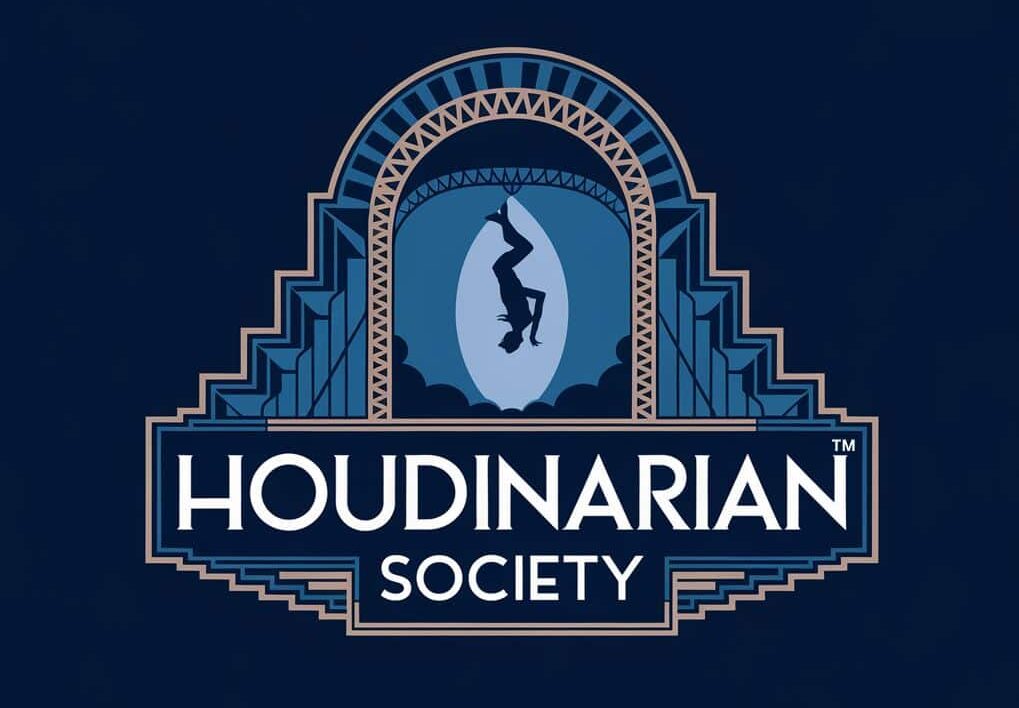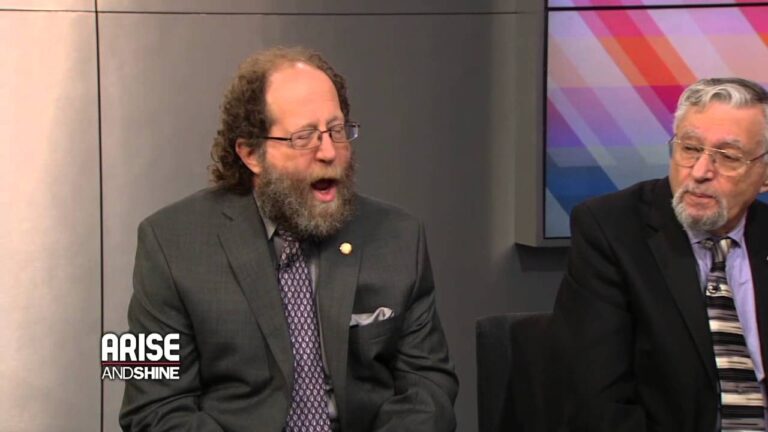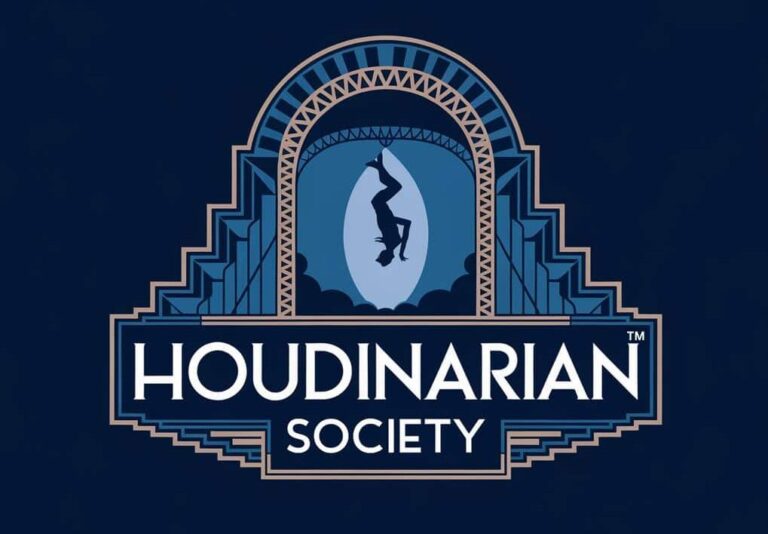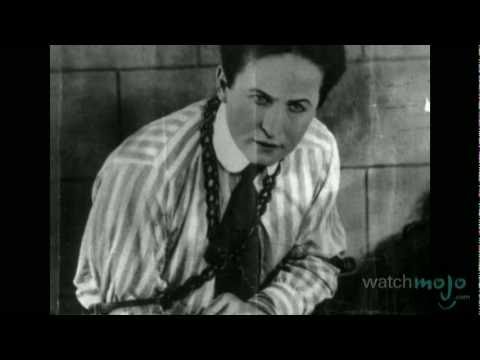The Evolution of Houdini’s Magic: From Early Tricks to Legendary Illusions
Harry Houdini transformed magic from simple card tricks into spectacular death-defying escapes that amazed audiences worldwide. His evolution as a magician started with basic conjuring acts in circus sideshows and vaudeville. Later, his acts grew into legendary illusions like the Chinese Water Torture Cell that still captivate people’s imaginations today.
You might know Houdini best for his famous escapes, but his journey to becoming a master illusionist took years of practice and innovation. He perfected techniques for escaping handcuffs, milk cans, and straitjackets while hanging upside down. Each new feat pushed the boundaries of what seemed possible.
Magic has changed a lot since Houdini’s time. Today’s performers mix close-up magic and street performances with grand illusions. Yet Houdini’s influence remains strong. His dedication to his craft and ability to capture the public’s imagination set standards that modern magicians still follow.
The Evolution Of Houdini’s Magic: From Early Tricks To Legendary Illusions

Harry Houdini transformed from a simple card magician into the world’s most famous escape artist through innovation, showmanship, and relentless dedication to his craft. His journey reshaped the landscape of magical entertainment forever.
The Early Years: Eric Weisz And His Initial Forays Into Magic
Born as Erik Weisz in Budapest, young Harry discovered his passion for magic after moving to New York City at age 13. He practiced tirelessly in front of mirrors, perfecting each movement.
His first performances took place on the streets and in small theaters. He called himself “Eric the Great” before adopting the name Harry Houdini, inspired by French magician Jean Eugène Robert-Houdin.
Early shows featured card tricks and basic illusions. He worked in circus sideshows and dime museums, learning valuable lessons about audience engagement.
Developing The Craft: From Card Tricks To Escape Acts
Houdini’s transition to escape artistry began when he noticed audiences’ strong reactions to his handcuff escapes. He studied lock mechanisms obsessively, becoming an expert locksmith.
The “Metamorphosis” illusion with his wife Bess marked his first major breakthrough. This quick-change trunk escape became his signature piece during early tours.
His act evolved to include chains, straightjackets, and prison cells. Each new challenge pushed the boundaries of what seemed possible.
The Rise To Fame: Groundbreaking Escape Artistry
Houdini’s fame exploded with daring public exhibitions. He escaped from jail cells in front of police officers and newspaper reporters, generating massive publicity.
His underwater escapes captured public imagination. The Chinese Water Torture Cell became his most dangerous and impressive feat.
He challenged police departments worldwide to restrain him. No one succeeded in creating a prison that could hold him.
Technical Progression: Innovations In Stage Illusions
Houdini pioneered new methods for illusion construction. He designed special locks and mechanisms that allowed for more spectacular escapes.
His careful study of physics and engineering principles led to groundbreaking stage effects. Every prop underwent rigorous testing before public presentation.
He invested heavily in custom equipment, creating unique apparatus that other performers couldn’t duplicate.
Revolutionary Performances: Milestones In Houdini’s Career
The suspended straitjacket escape drew thousands of spectators. Hanging upside down from tall buildings, he would free himself while crowds watched in amazement.
Bridge jumps in chains became another specialty. These outdoor spectacles often stopped city traffic and made front-page news.
The buried alive stunt pushed the limits of endurance and showmanship. Each performance raised the stakes higher than before.
Legacy And Influence: Houdini’s Lasting Impact On Magic
Modern magicians still study Houdini’s innovative techniques. His methods for misdirection and audience control remain relevant today.
He elevated magic from simple entertainment to high art. His combination of physical prowess and theatrical presentation created a new standard for performers.
The International Society of Magicians, which he helped establish, continues to preserve and advance the art of magic.
The Early Years: Eric Weisz And His Initial Forays Into Magic

The transformation of young Eric Weisz into Harry Houdini marked the beginning of magic’s most iconic figure, starting with simple card tricks and evolving into a performer who would revolutionize entertainment.
Early Life And Introduction To Magic
Born Erik Weisz on March 24, 1874, in Budapest, Hungary, to a Jewish family. His father served as a rabbi, and the family immigrated to the United States when Erik was four years old.
In Wisconsin, young Erik discovered his passion for performance while watching a traveling magician perform basic tricks. He practiced endlessly in front of mirrors, mastering fundamental techniques.
His childhood was marked by financial hardship. He worked various jobs to help support his family, including shining shoes and delivering newspapers.
First Performances And Basic Sleight Of Hand
His first magic shows began in 1891 as a card magician. These early performances revealed his limited sleight of hand abilities, but his determination never wavered.
He performed at local sideshows and dime museums, earning modest fees while developing his skills. Each show taught him valuable lessons about audience engagement.
Young Erik focused on basic tricks:
- Card manipulations
- Coin palming
- Simple rope escapes
- Basic mentalism effects
Transition From Eric Weisz To Harry Houdini
In 1894, Erik made a crucial decision to reinvent himself as Harry Houdini, inspired by the French magician Jean Eugène Robert-Houdin.
The name change marked a new chapter in his career. He began developing more daring acts, moving beyond simple card tricks to incorporate elements of escape artistry.
This period saw him meet Wilhelmina Beatrice Rahner, known as Bess, who became both his wife and stage assistant. Together they created the “Metamorphosis” illusion, which would become one of their signature acts.
Developing The Craft: From Card Tricks To Escape Acts

Harry Houdini’s transformation from a skilled card magician to a master escape artist marked a revolutionary shift in the history of magic performance. His early dedication to perfecting sleight of hand laid the foundation for his later death-defying escapes.
Mastering Card Tricks And Close-Up Magic
Young Ehrich Weiss began practicing card tricks at age 12, spending countless hours perfecting key card techniques. You can trace his early development through his work at Coney Island’s dime museums, where he performed close-up magic for small crowds.
His repertoire included the “ambitious card” trick, where a chosen card repeatedly rises to the top of the deck. He mastered the double lift, palm changes, and false shuffles – skills that would later help him manipulate locks and chains.
Early Stage Performances And Audience Reactions
Houdini’s first performances met with mixed success. You would have found him performing in beer halls and small theaters as part of the traditional magic acts of the time.
He quickly learned to read audiences and adapt his shows accordingly. His early acts included the “Metamorphosis” illusion, where he and his wife Bess would swap places in a locked trunk.
The crowds began to grow more interested when he added elements of danger and suspense to his performances.
Introduction To Escape Acts
Houdini made a bold move when he shifted his focus to escapology. His first escape acts involved handcuffs, which he practiced picking for hours each day.
He challenged police stations to lock him up, turning ordinary restraints into theatrical props. You would see him emerge from handcuffs while hanging upside down from tall buildings.
His escape acts grew more complex, incorporating chains, straightjackets, and water tanks. Each new challenge pushed the boundaries of what audiences thought possible.
The Rise To Fame: Groundbreaking Escape Artistry
Harry Houdini transformed from a struggling circus performer into an international sensation through his revolutionary escape acts. His remarkable ability to free himself from seemingly impossible restraints changed entertainment forever.
Signature Escapes And Publicity Stunts
The Mirror Handcuff Challenge became one of Houdini’s most famous feats in 1904. He spent over an hour escaping from these custom-made restraints while thousands watched in suspense.
You might be amazed to learn that Houdini regularly performed the Chinese Water Torture Cell, suspending himself upside-down in a glass tank filled with water. This death-defying act required him to hold his breath for over three minutes.
His outdoor stunts drew massive crowds. Wrapped in chains, he would leap into rivers and emerge free within minutes. Each escape became more daring than the last.
The Role Of Media In Houdini’s Popularity
His innovative marketing tactics kept him in the spotlight. He challenged local police departments to restrain him, making front-page news in every city he visited.
Newspapers eagerly covered his performances, with reporters describing his feats in vivid detail. You could find his name in headlines across the world.
He understood the power of photography, ensuring his most dramatic moments were captured. These images appeared on posters and postcards, spreading his fame far beyond the theater walls.
Key Performances That Cemented His Reputation
The Houdini Museum preserves records of his most memorable shows. His straight jacket escapes, performed while dangling from tall buildings, stopped traffic in major cities.
His milk can escape became legendary. You would watch as assistants locked him inside a water-filled milk can, hidden behind a curtain. The tension built as minutes passed before his triumphant emergence.
His prison cell escapes proved particularly impressive. He freed himself from the most secure cells in America and Europe, often completing the feat in under an hour.
Technical Progression: Innovations In Stage Illusions
Houdini transformed the art of illusion through technical mastery and innovative approaches to stagecraft. His pioneering methods merged mechanical ingenuity with theatrical presentation.
Development Of Complex Illusions
Houdini’s early stage illusions set the foundation for his legendary escapes. He started with card tricks and basic sleight of hand before creating more sophisticated deceptions.
His famous Metamorphosis trick showed his technical brilliance. In this illusion, he switched places with his wife Bess inside a locked trunk in just three seconds.
The Water Torture Cell represented his most advanced creation. This complex apparatus required precise engineering and timing. You can see the influence of his mechanical knowledge in the carefully crafted locks and release mechanisms.
Collaboration With Other Magicians And Inventors
Houdini worked closely with skilled craftsmen to build his props and devices. He partnered with lock manufacturers to understand their mechanisms better.
His friendship with inventor Charles Morritt led to several breakthrough illusions. Together they developed improved methods for the Walking Through a Brick Wall trick.
He maintained a workshop in his New York home where he tested new ideas with fellow magicians. These sessions helped refine his techniques through practical experimentation.
Impact Of Technology On His Magic
Houdini moved magic from simple tricks to dramatic performances by incorporating the latest technology. He used electric lights to enhance visibility and create dramatic effects.
His understanding of photography and film helped him design illusions that worked well on stage and screen. He adapted his performances for early motion pictures.
The advent of steel handcuffs and sophisticated locks pushed him to develop new escape methods. Each technological advance required fresh solutions and innovative thinking.
Revolutionary Performances: Milestones In Houdini’s Career
Harry Houdini transformed magic from simple parlor tricks into grand theatrical spectacles that captivated audiences worldwide. His innovative techniques and death-defying stunts created a new standard for magical entertainment.
Notable Stage Illusions And Their Reception
His first theatrical performance at the Columbia Theater in 1908 marked a turning point in magic history. The show ran for an impressive two and a half hours, making it his longest performance to date.
His early acts featured classic magic like card tricks and handkerchief productions. These simpler illusions laid the groundwork for his later, more complex performances.
The famous “Metamorphosis” illusion became his signature piece. In this act, Houdini and his wife Bess would swap places in a locked trunk in mere seconds, leaving audiences stunned.
Famous Escapes And Their Cultural Impact
The Chinese Water Torture Cell became one of his most iconic escapes. Suspended upside-down in a glass tank filled with water, Houdini would free himself while holding his breath.
His handcuff escapes earned him the nickname “The Handcuff King.” He challenged police departments worldwide to restrain him, always emerging victorious.
The Milk Can Escape drew massive crowds. Houdini would be locked inside a milk can filled with water, creating intense drama as he fought for his life.
The Evolution Of His Performance Style
Starting as a struggling performer, Houdini developed his unique style by combining physical prowess with theatrical flair.
He mastered the art of publicity by staging outdoor spectacles. Strait jacket escapes while suspended from buildings became a trademark that drew thousands of spectators.
His performances grew more dangerous over time. Each new escape pushed the boundaries of what seemed humanly possible, creating unprecedented levels of suspense and excitement.
He incorporated elements of mentalism and exposing fraudulent mediums into his later shows, demonstrating his versatility as an entertainer.
Legacy And Influence: Houdini’s Lasting Impact On Magic
Harry Houdini’s revolutionary techniques and showmanship created ripples through the magic world that continue today. His pioneering methods and innovative escapes transformed magic from simple parlor tricks into grand theatrical performances.
Contributions To Modern Magic And Illusion
Houdini elevated magic by introducing physical strength and endurance into performances. His famous Water Torture Cell required both mental focus and athletic ability.
You can see his influence in modern stage design and theatrical presentation. He created the practice of letting audiences inspect props and equipment before shows.
His marketing genius brought magic into mainstream entertainment. He used newspapers, posters, and publicity stunts to build excitement for shows.
Influence On Future Generations Of Magicians
Modern magicians still study Houdini’s daring escapes and masterful performances to perfect their craft. His showmanship blueprint remains the gold standard.
You’ll find traces of his publicity methods in today’s magic shows. He pioneered the art of creating anticipation through media coverage and public demonstrations.
Many famous illusionists like David Copperfield and Penn & Teller credit Houdini as their inspiration. His emphasis on originality pushed magicians to develop unique styles.
Preservation Of Houdini’s Techniques And Performances
The Houdini Museum in Scranton houses original props, posters, and equipment from his shows. These artifacts help preserve his methods for future generations.
Magic societies worldwide maintain libraries of his techniques and innovations. His detailed notebooks provide insights into trick development and performance psychology.
Professional magicians still use modified versions of his signature escapes. His rope escapes and handcuff challenges remain popular in modern magic shows.
Final Thoughts
Harry Houdini transformed magic from simple card tricks and handkerchief illusions into spectacular death-defying feats. His journey shows how dedication and innovation can revolutionize an art form.
You can see his influence in modern magic through the way performers combine physical skill with theatrical presentation. His legacy teaches us that success comes from constant practice and a willingness to push boundaries.
Houdini’s greatest achievement wasn’t just his famous escapes and stunning tricks – it was his ability to capture people’s imagination. His showmanship and marketing skills created an enduring mystique that still fascinates audiences today.
The transition from close-up magic to grand illusions set a new standard for magical entertainment. Your appreciation of modern magic shows deepens when you recognize Houdini’s influence on the craft.
His determination to perfect each performance reminds you that mastery requires both technical skill and artistic vision. The magic world continues to build on his foundational work, though few have matched his legendary status.
Remember that Houdini’s greatest trick was making the impossible seem possible. His story proves that with enough persistence and creativity, you can transcend the ordinary and create something truly extraordinary.
Contents
- 1 The Evolution Of Houdini’s Magic: From Early Tricks To Legendary Illusions
- 1.1 The Early Years: Eric Weisz And His Initial Forays Into Magic
- 1.2 Developing The Craft: From Card Tricks To Escape Acts
- 1.3 The Rise To Fame: Groundbreaking Escape Artistry
- 1.4 Technical Progression: Innovations In Stage Illusions
- 1.5 Revolutionary Performances: Milestones In Houdini’s Career
- 1.6 Legacy And Influence: Houdini’s Lasting Impact On Magic
- 2 The Early Years: Eric Weisz And His Initial Forays Into Magic
- 3 Developing The Craft: From Card Tricks To Escape Acts
- 4 The Rise To Fame: Groundbreaking Escape Artistry
- 5 Technical Progression: Innovations In Stage Illusions
- 6 Revolutionary Performances: Milestones In Houdini’s Career
- 7 Legacy And Influence: Houdini’s Lasting Impact On Magic
- 8 Final Thoughts






